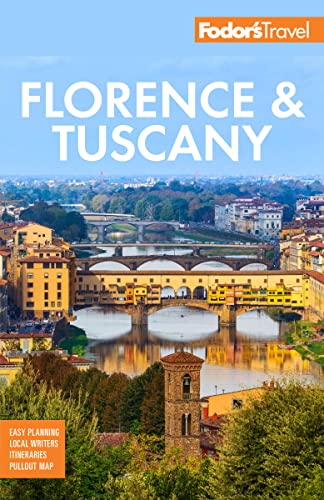Eating and Drinking Well in Florence
In Florence, simply prepared meats, grilled or roasted, are the culinary stars, usually paired with seasonal vegetables like artichokes or porcini. Bistecca is popular here, but there's plenty more that tastes great on the grill, too.
Traditionalists go for their gustatory pleasures in trattorie and osterie, places where decor is unimportant and place mats are mere paper. Culinary innovation comes slowly in this town, though some cutting-edge restaurants have been appearing.
By American standards, Florentines eat late: 1:30 or 2 pm is typical for lunch and 9 pm for dinner is considered early. Consuming a primo, secondo, and dolce is largely a thing of the past. For lunch, many Florentines simply grab a panino and a glass of wine at a bar. Those opting for a simple trattoria lunch often order a plate of pasta and dessert.
Stale and Stellar
Stale bread is the basis for three classic Florentine primi: pappa al pomodoro, ribollita, and panzanella. Pappa is made with either fresh or canned tomatoes and that stale bread. Ribollita is a vegetable soup with cavolo nero, cannellini beans, and thickened with bread. Panzanella is reconstituted Tuscan bread combined with tomatoes, cucumber, and basil. They all are enhanced with a generous application of fragrant Tuscan olive oil.
A Classic Antipasto: Crostini di Fegatini
This beloved dish consists of a chicken-liver spread, served warm or at room temperature, on toasted, garlic-rubbed bread. It can be served smooth, like a pâté, or in a chunkier, more rustic version. It's made by sautéing chicken livers with finely diced carrot and onion, enlivened with the addition of wine, broth, or Marsala reductions, and mashed anchovies and capers.
A Classic Secondo: Bistecca Fiorentina
The town's culinary pride and joy is a thick slab of beef, resembling a T-bone steak, from large white oxen called Chianina. The meat's slapped on the grill and served rare, sometimes with a pinch of salt.
It's always seared on both sides, and just barely cooked inside.
A Classic Contorno: Cannellini Beans
Simply boiled, they provide the perfect accompaniment to bistecca. The small white beans are best when they go straight from the garden into the pot. They should be anointed with a generous dose of Tuscan olive oil; the combination is oddly felicitous, and it goes a long way toward explaining why Tuscans are referred to as mangiafagioli (bean eaters) by other Italians.
A Classic Dolce: Biscotti di Prato
These are sometimes the only dessert on offer. Biscotti means twice-cooked (or, in this case, twice baked). They are hard almond cookies that soften considerably when dipped languidly into vin santo ("holy wine"), a sweet dessert wine, or into a simple caffè.
A Classic Wine: Chianti Classico
This blend from the region just south of Florence relies mainly on the local, hardy sangiovese grape; it's aged for at least one year before hitting the market. (Riserve—reserves—are aged at least an additional six months.)
Chianti is usually the libation of choice for Florentines. Traditionalists opt for the younger, fruitier (and usually less expensive) versions often served in straw flasks. You can sample Chianti Classico all over town, and buy it in local supermarkets.




